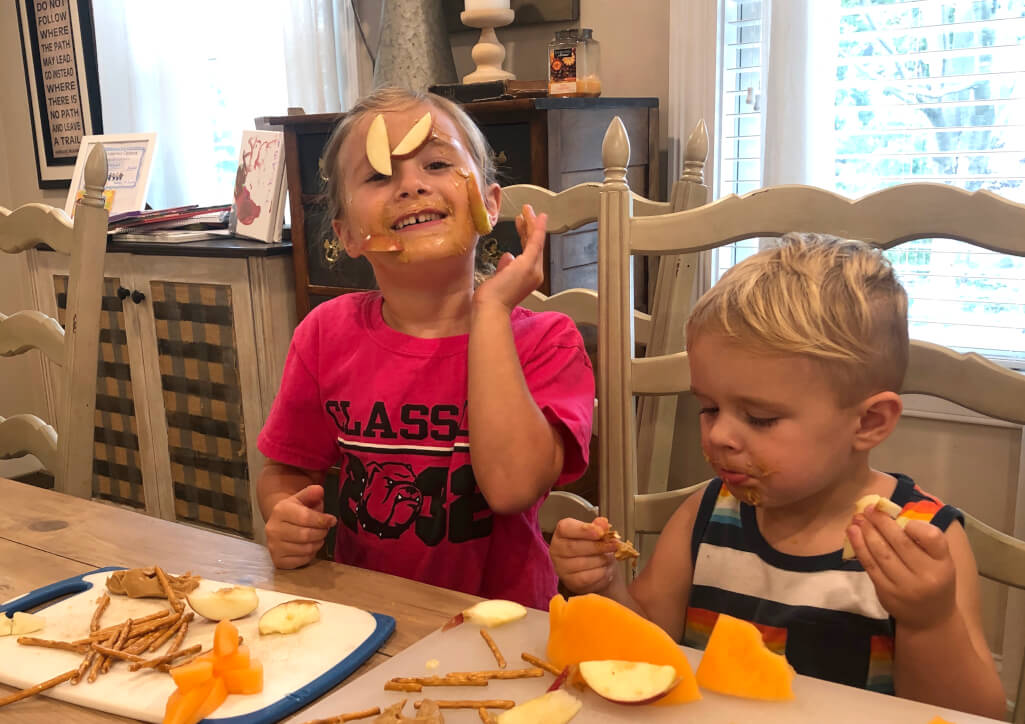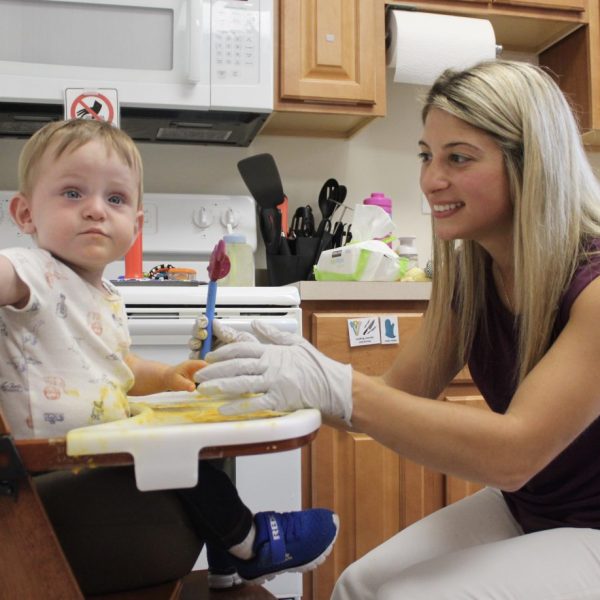Helping Your Youngster Love Feeding Therapy Farmingdale NY
Wiki Article
Browsing the Course to Successful Feeding: Ingenious Methods and Interventions for Reliable Feeding Therapy
Are you having a hard time to locate efficient strategies and treatments for effective feeding treatment? Look no more. This short article will certainly lead you via the course to success, supplying cutting-edge techniques to analyze feeding difficulties and established attainable objectives. With evidence-based methods, you'll learn how to deal with sensory handling problems and utilize assistive innovation and adaptive equipment. And also, we'll show you the significance of teaming up with family members and caregivers for optimum feeding outcomes. Prepare to browse the path to successful feeding!Assessing Feeding Challenges and Determining Objectives
You must begin by evaluating your child's feeding challenges and determining specific objectives for their therapy. This action is important in establishing a reliable feeding treatment plan. Begin by observing your youngster's feeding actions and patterns. Seek any kind of difficulties or hostilities they might have in the direction of certain foods or structures. Remember of any sensory or physical issues that may be influencing their capability to eat. You can after that set certain objectives for their therapy when you have actually determined these obstacles. These objectives must be possible and practical, concentrating on boosting your child's feeding skills and total nourishment. You might set an objective for your kid to be able to tolerate a broader variety of appearances or to self-feed with utensils. It is essential to interact these objectives with your kid's feeding specialist so they can tailor the treatment sessions to deal with these details difficulties. By analyzing your kid's feeding challenges and setting goals, you are taking the very first action towards assisting them create effective feeding skills.Carrying Out Evidence-Based Strategies for Feeding Treatment
Applying evidence-based techniques for feeding therapy can cause favorable outcomes for children. You are making sure that the treatments made use of are supported by scientific research study and have actually been verified reliable when you incorporate these methods right into your youngster's treatment plan. This approach raises the chance of success and helps deal with the certain feeding difficulties your kid may be experiencing.By complying with evidence-based techniques, you can offer your child with the very best possible care and support. These strategies might include using a range of sensory experiences throughout nourishments, such as discovering different textures and tastes, to urge acceptance of brand-new foods. In addition, applying therapy techniques can help address picky consuming behaviors and advertise much healthier eating patterns.
One more crucial element of evidence-based feeding therapy is including the family members in the therapy process. By supplying education and assistance to caregivers and parents, they can play an energetic role in assisting their kid get over feeding challenges. This collective technique boosts the performance of treatment and promotes lasting positive modifications in your child's eating routines.

Attending To Sensory Handling Issues in Feeding Treatment
Resolving sensory handling concerns in feeding treatment can be challenging, however it is essential for promoting a positive eating experience for children. When you experience a kid with sensory handling troubles during nourishment, it is very important to recognize that their reactions to particular structures, preferences, scents, and even audios are not deliberate (feeding therapy long island). By acknowledging and dealing with these problems, you can aid create a helpful setting that urges healthy consuming behaviors
One effective strategy is to introduce brand-new foods slowly. Start with small, non-threatening sections and gradually boost the amount gradually. This approach enables the kid to become aware of the food and its sensory residential or commercial properties at their very own pace. Additionally, using a selection of flavors and textures can aid desensitize their sensory system and expand their food preferences.
Involving the child in sensory play tasks can also be beneficial. Motivate them to discover various textures, such as squishing, pressing, or touching numerous food products. This can aid normalize sensory input and minimize hostilities to certain structures.
An additional important element is providing a organized and calm eating environment. Reduce diversions, such as bright lights or loud noises, which can bewilder their detects and prevent their ability to concentrate on consuming. Creating a predictable regular and using visual timetables can also assist the child feel more safe and secure and in control during nourishment.

Utilizing Assistive Modern Technology and Adaptive Devices
Utilizing assistive innovation and flexible tools can greatly improve the feeding experience for kids with sensory processing troubles. Nourishment can be difficult and overwhelming when you have problem with sensory handling. With the right devices, you can make it a much more pleasurable and successful experience.One alternative is making use of specialized utensils and plates made to suit your needs. These utensils might have textured deals with or a bigger grip, making them less complicated to adjust and hold. Plates with separated sections can aid separate different foods and stop them from touching, which can be a source of pain for some children.
Along with specialized plates and tools, there are also assistive gadgets that can be made use of during feeding. A heavy vest or lap pad can give deep pressure input, assisting to soothe and manage your sensory system. A vibrating tooth brush or chewable jewelry can offer dental sensory excitement, making the act of eating extra pleasurable.
Modern technology can also contribute in enhancing the feeding experience. There are gadgets and applications readily available that can provide auditory or visual signs, such as timers or motivates, to help you remain concentrated and organized during nourishment.
Collaborating With Families and Caregivers for Successful Feeding Results
When working together with caregivers and family members, you can interact to develop a supportive and nurturing environment for effective feeding outcomes. By involving family members and caretakers in the feeding therapy process, you can gain valuable insights right into the child's feeding challenges, preferences, and practices. feeding therapy long island. This collaboration enables an alternative method to feeding treatment, addressing not just the physical elements but additionally the psychological and psychological elements that might impact a child's feeding abilitiesOne trick element of teaming up with caregivers and households is giving education and training. By outfitting them with expertise and skills, they can actively join the feeding therapy procedure and support the kid's progress outside of therapy sessions. This can consist of educating them feeding methods, approaches for taking care of mealtime actions, and recognizing the significance of uniformity and routine in establishing healthy and balanced eating behaviors.
Moreover, including family members and caregivers in setting goal and treatment preparation makes certain that their point of views and objectives for the child are thought about. By interacting, you can develop achievable and practical goals that line up with the family members's top priorities and my review here worths - feeding therapy long island. This collective strategy fosters a sense of possession and empowerment, creating a strong structure for effective feeding outcomes
On top of that, open and routine interaction with families and caregivers is important for efficient collaboration. By preserving continuous dialogue, you can deal with issues, offer assistance, and make necessary adjustments to the feeding therapy plan as needed. This communication also enables sharing development updates, commemorating accomplishments, and recognizing any kind of obstacles or barriers that may occur.

Conclusion
You have discovered different techniques and treatments for efficient feeding therapy, such as analyzing difficulties, implementing evidence-based strategies, resolving sensory handling issues, and making use of assistive innovation. Remember to constantly stay proactive and cutting-edge in your approach to feeding treatment.It's vital to interact these objectives with your child's feeding therapist so they can customize the treatment you could try this out sessions to address these particular difficulties.Applying evidence-based strategies for feeding therapy can lead to positive results for kids.Resolving sensory handling concerns in feeding treatment can be tough, but it is vital for advertising a favorable consuming experience for kids. By including family members and caretakers in the feeding treatment procedure, you can obtain valuable insights into the child's feeding habits, obstacles, and preferences. By outfitting them with understanding and abilities, they can proactively get involved in the feeding sites treatment process and support the youngster's progression outside of treatment sessions.
Report this wiki page